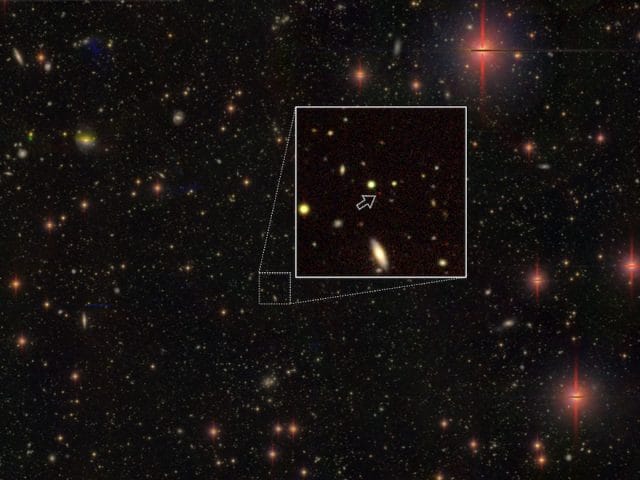Colossal Radio Jet Illuminates Secrets of the Infant Cosmos
In a groundbreaking discovery, astronomers have observed the largest radio jet ever recorded in the early universe. This cosmological marvel, emanating from a quasar over 12 billion light-years away, provides an unprecedented window into the universe’s early developmental stages. Stretching over 200,000 light-years—roughly twice the width of the Milky Way—the jet challenges previous understandings of the behavior and influence of black holes during a time when the cosmos was still young and formative.
The object responsible for this radio jet is quasar J1601+3102, a celestial beacon powered by a supermassive black hole at its center. Quasars are among the brightest objects in the universe, fueled by matter falling into their central black holes and releasing enormous amounts of energy. J1601+3102’s radio jet was spotted through combined observations from advanced instruments, including the Low Frequency Array (LOFAR) Telescope and the Gemini North Observatory. These facilities revealed the structure of the jet with remarkable clarity, allowing scientists to measure its immense size and gain insights into its properties.
Unraveling the Jet’s Origins
Radio jets like the one observed in J1601+3102 are composed of high-energy particles ejected at nearly the speed of light. These phenomena are thought to arise from interactions between powerful magnetic fields and matter swirling near a black hole’s event horizon. As the particles accelerate and interact with the surrounding medium, they emit vast amounts of radio waves, which astronomers can detect across immense distances.
In the case of J1601+3102, the radio jet appeared as a pair of symmetrical lobes extending from either side of the quasar. These lobes represent regions where the particles interact with intergalactic matter, creating bright emissions. The sheer scale of the jet surprised scientists, as such extensive structures are rarely observed even in more mature galaxies.
A Glimpse into the Ancient Universe
What makes this discovery particularly compelling is its age. The quasar’s light has taken approximately 12 billion years to reach Earth, meaning astronomers are observing it as it existed when the universe was just around 1.2 billion years old. This corresponds to the epoch of reionization, a critical chapter in cosmic history when the first galaxies and stars transformed the primordial murkiness into the transparent universe we see today.
The jet’s detection also sheds light on previously elusive aspects of early-universe physics. For instance, it demonstrates that even during this early phase, supermassive black holes were capable of generating highly energetic and expansive jets. This implies that black hole formation and evolution occurred at a faster pace than previously hypothesized.
Implications for Cosmic Evolution
The discovery of J1601+3102’s jet has implications not only for the understanding of quasars and black holes but also for the broader context of galaxy formation and evolution. Radio jets are known to influence their host galaxies significantly. The energy injected by the jets can trigger star formation in some cases or suppress it in others by heating and dispersing interstellar gas. This feedback mechanism likely played a vital role in shaping the galaxies of the early universe and may still influence their development billions of years later.
Moreover, the radio jet provides critical data about the intergalactic medium—the vast, sparse matter that fills the space between galaxies. By analyzing how the jet interacts with the medium, scientists can infer its density, composition, and temperature during the early cosmic epoch.
Advancing the Study of the Early Universe
The discovery of this gigantic radio jet is just the beginning. Researchers plan to study J1601+3102 further using next-generation telescopes, such as the Square Kilometre Array (SKA), which will offer even greater sensitivity to faint radio emissions. These efforts aim to uncover additional massive jets and further unravel the mysteries of the early universe.
As scientists continue to peer deeper into the universe’s history, they are beginning to piece together the complex narrative of how the cosmos evolved from its fiery inception to the intricate web of galaxies, stars, and planets we observe today. The revelation of J1601+3102’s colossal jet is a testament to humanity’s growing prowess in exploring and understanding the vast tapestry of the universe.



